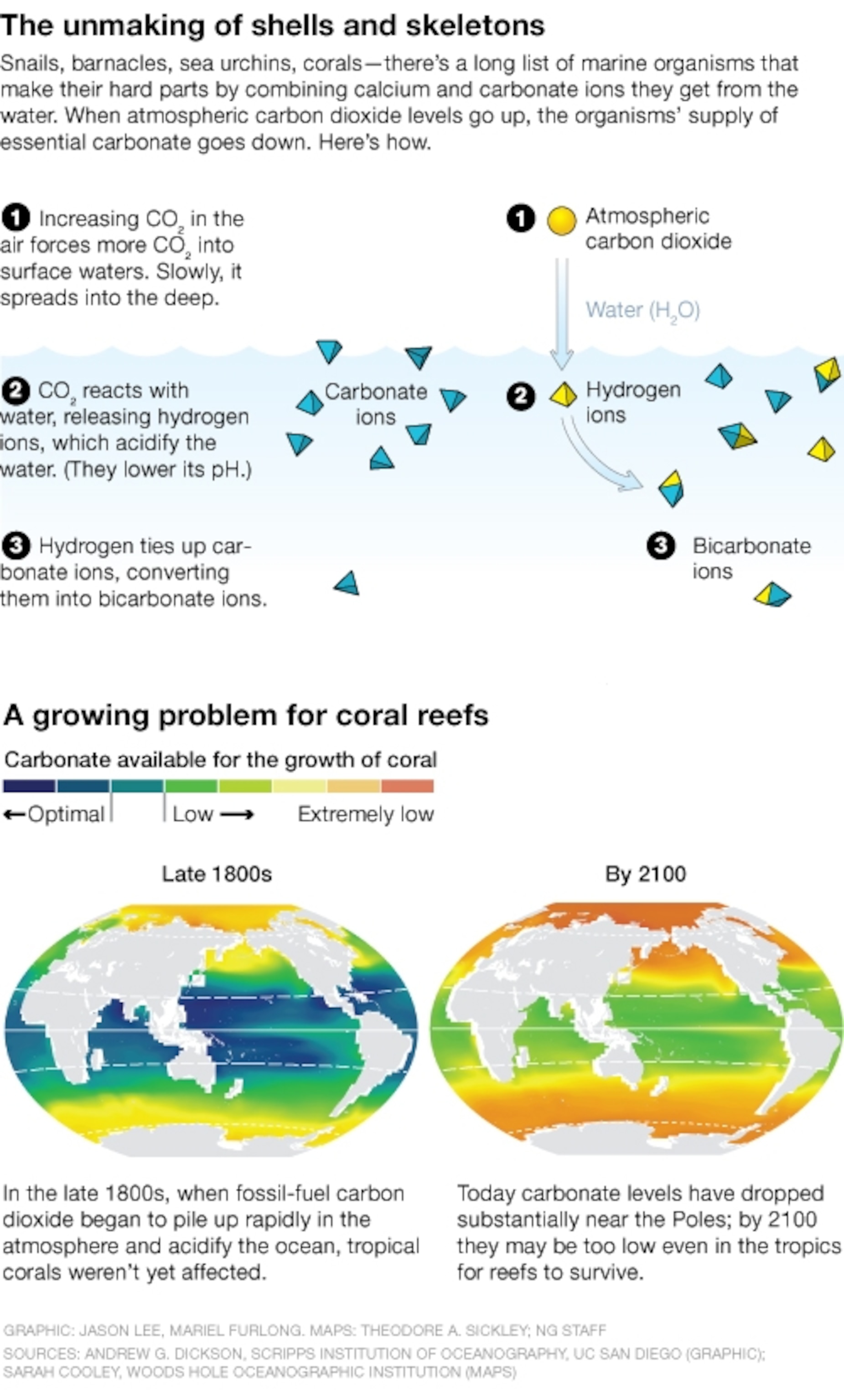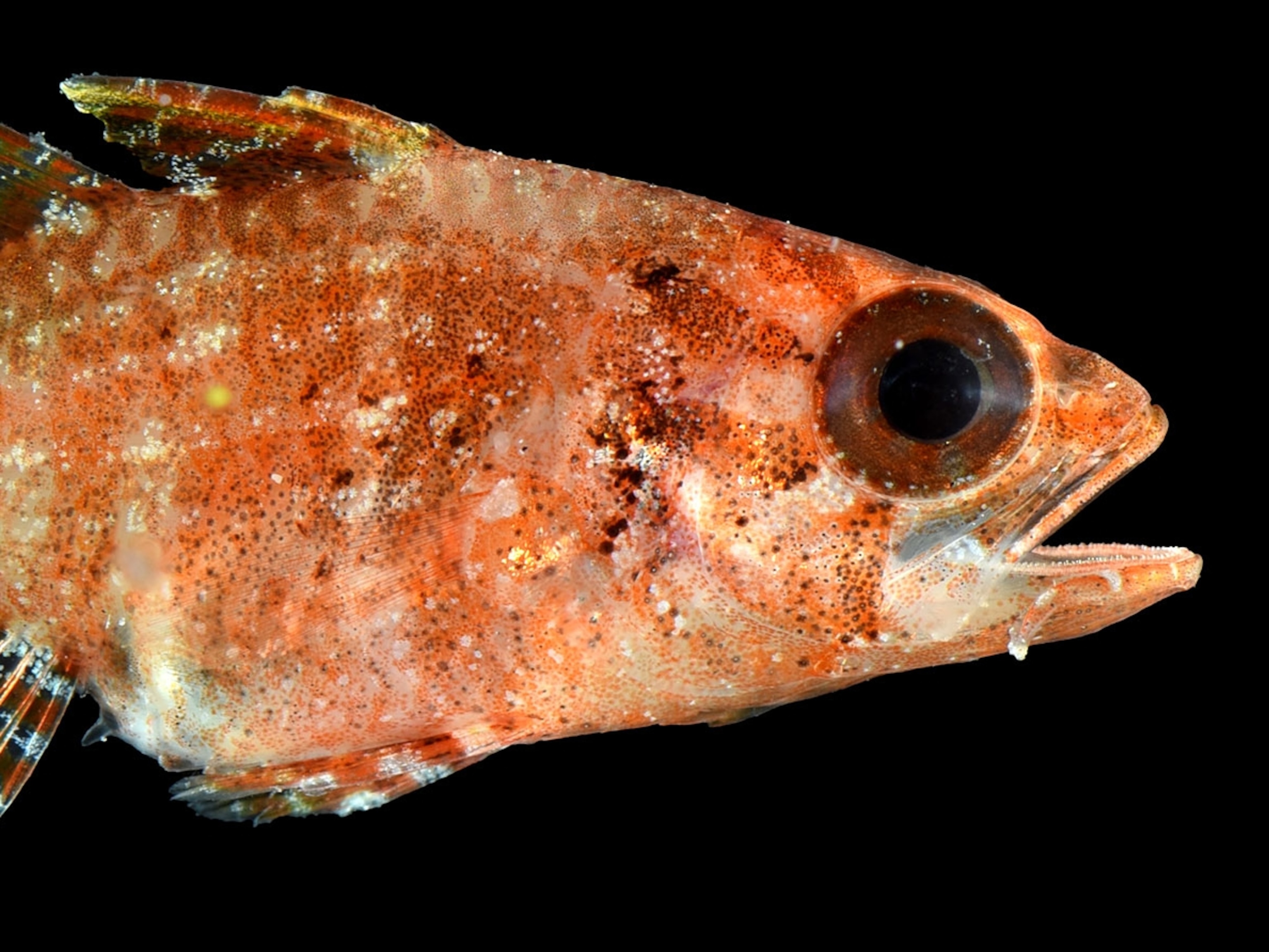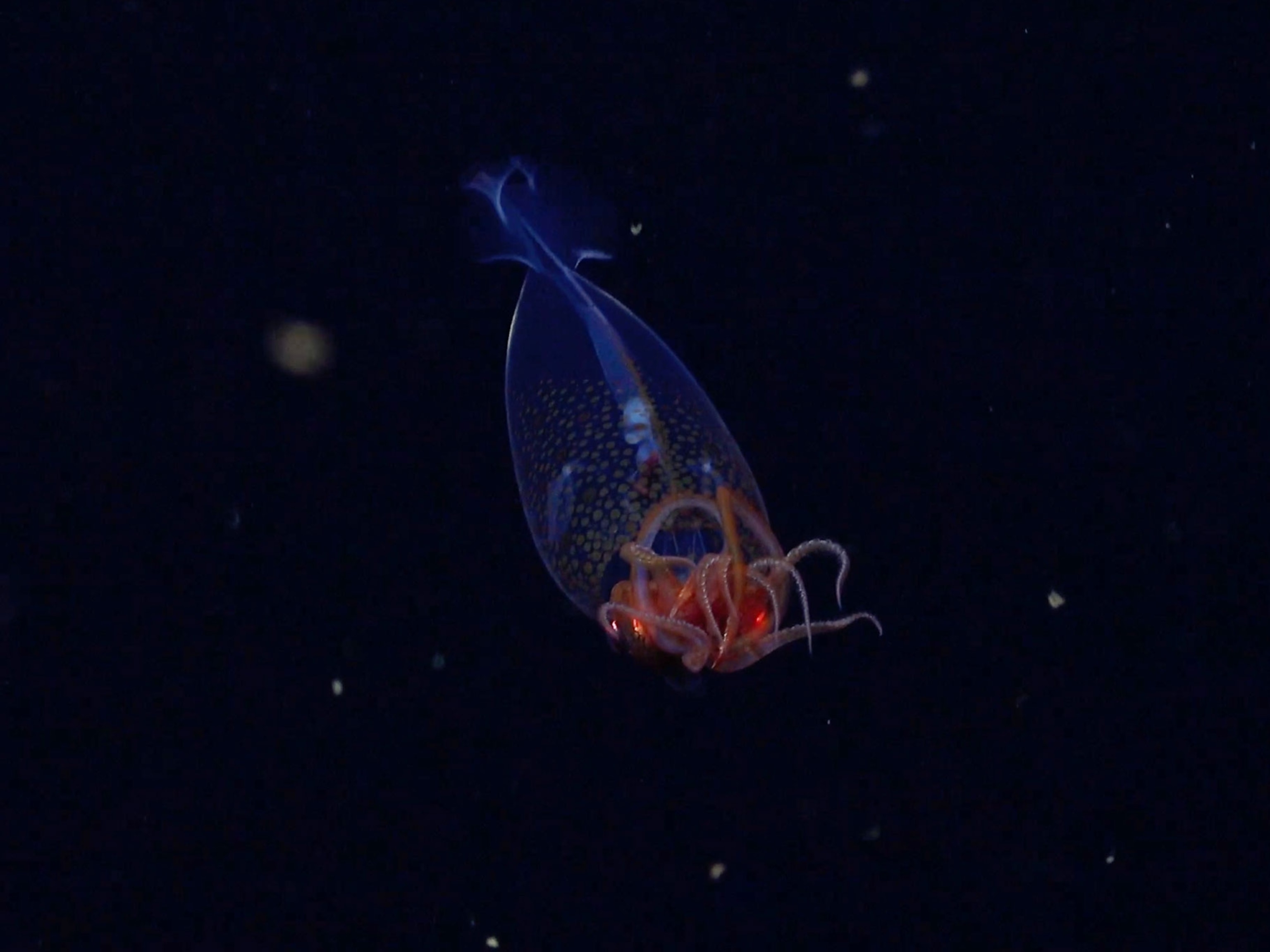
Ocean Acidification Chipping Away at Snail Shells
Corrosive waters are damaging the shells of marine snails off the U.S. West Coast.
Ocean acidification isn't proceeding at a snail's pace, says new research.
The study finds that corrosive water off the U.S. West Coast is dissolving the shells of a marine snail, also known as a sea butterfly, that is a key player in the coastal food chain.
Researchers worry that the mollusks' weakened shells could have far-reaching consequences for the animals that eat them, such as fish and marine mammals.
Salmon, herring, and other commercially important species rely on a snail-rich diet. But with many sea butterflies now growing thin, pitted, bumpy shells—a clear sign of ocean acidification—their ability to reproduce, protect against infection, and even swim is being compromised.
"We've been talking about ocean acidification as a problem for the future," says Scott Doney, an oceanographer with the Woods Hole Oceanographic Institution (WHOI) in Massachusetts, who was not involved in the study. But this research, he says, shows that it's already an issue. (Read about ocean acidification in National Geographic magazine.)

Damaged Protection
A team led by Nina Bednaršek and Richard Feely of the U.S. National Oceanic and Atmospheric Administration (NOAA) found that between 24 and 53 percent of the sea butterflies they studied in 2011 off the Washington, Oregon, and California coasts showed signs of severe shell damage.
Most of the injured animals were found closer to shore, where waters are most acidic due to high concentrations of carbon dioxide from the burning of fossil fuels. A natural phenomenon called upwelling—a seasonal event on the West Coast in which deep-water nutrients and carbon dioxide rise to the surface—compounds the problem.
Lab studies have repeatedly shown that sea butterflies struggle to build shells in acidic waters, says Bednaršek.
But now, says Feely, "we see for the first time a clear indication of the effects of ocean acidification on a critical marine organism [in the wild]."

An Uncertain Future
WHOI's Doney says Bednaršek and Feely's work, published this week in the journal Proceedings of the Royal Society B, raises a lot of questions. For instance, while it's clear these snails are being affected, it's not clear exactly how their deterioration will affect the food chain.
In any event, says Doney, the problem is going to only get worse. Bednaršek and colleagues predict that by 2050, about 70 percent of West Coast sea butterflies could have severely damaged shells.
The only clear fix? Doney says that would be to reduce carbon emissions. But, he adds, "that's a much more difficult problem."
Follow Jane J. Lee on Twitter.





